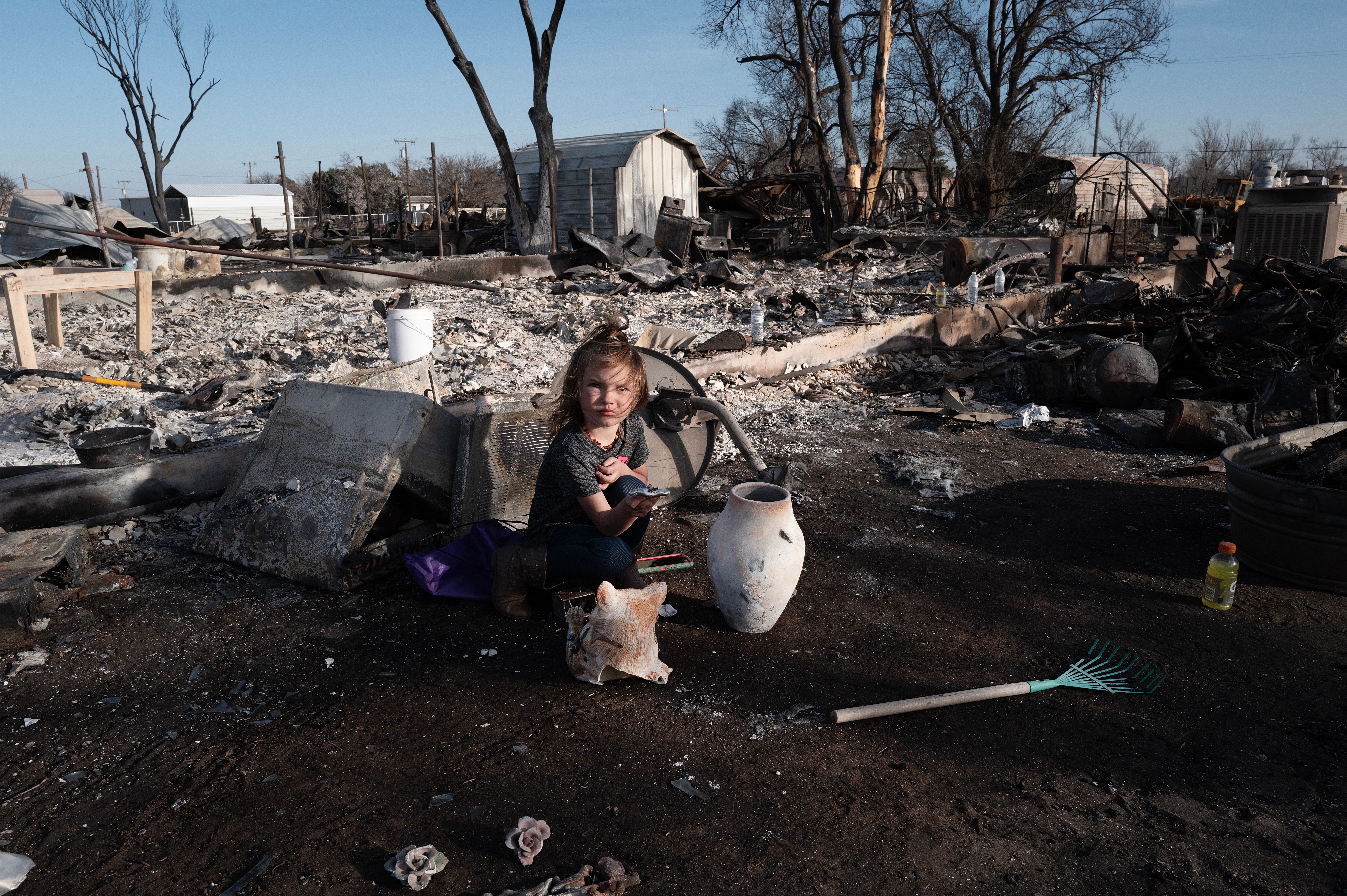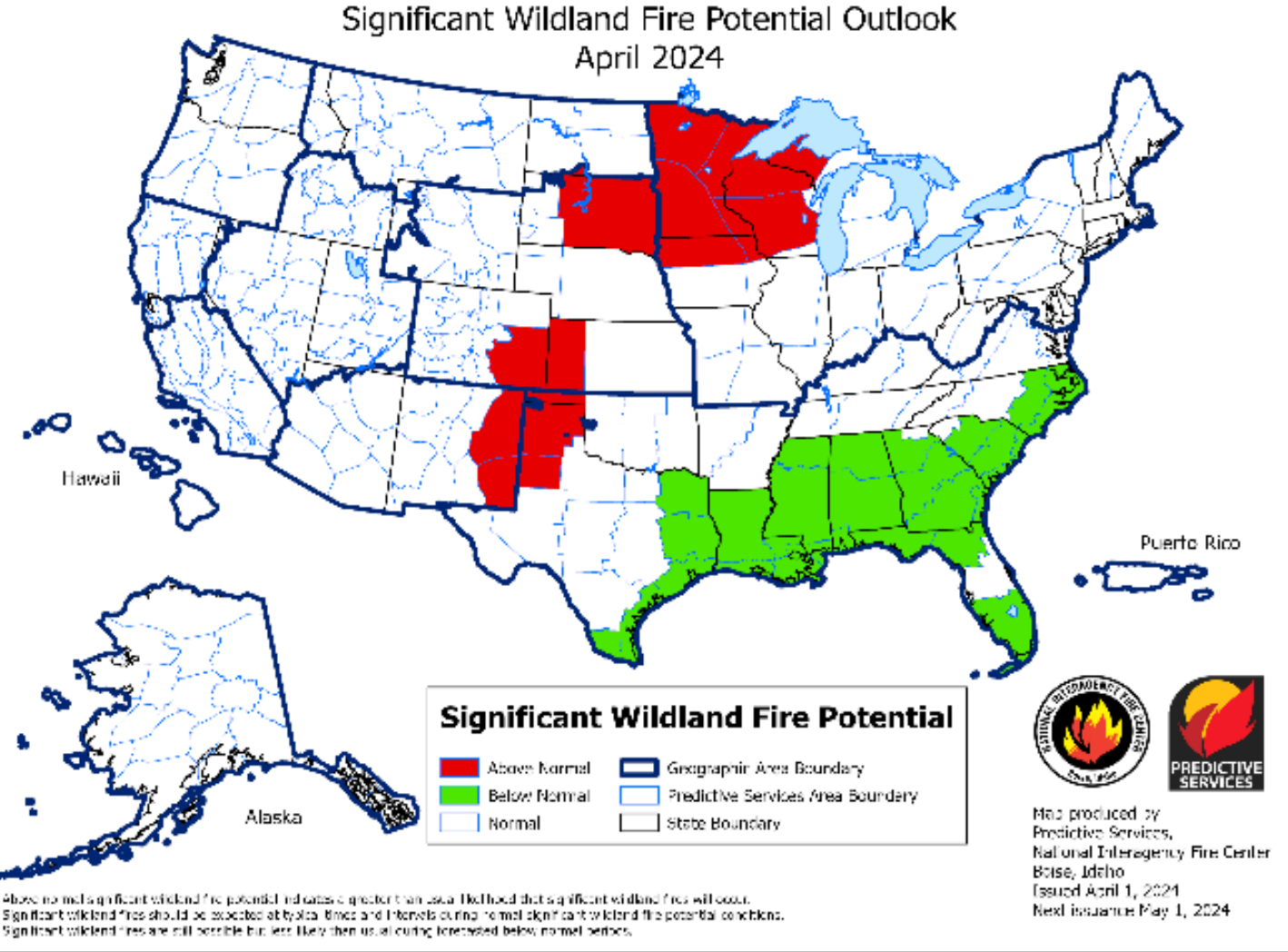Wildfires destroy 1.7m acres of land in first three months of 2024 – half of last year’s total
First three months of 2024 had 8,433 wildfires
Wildfires across the United States have destroyed more than 1.7 million acres of land in the first three months of 2024, already more than half of last year’s total.
Three large, uncontained fires are currently burning in Alabama, Missouri and Florida, according to the National Interagency Fire Center (NIFC), while wildland firefighters have managed to get 23 other large fires under control this week.
So far this year, there have been 8,433 wildfires in the US, slightly below the 10-year average. However, the number of acres burned is more than triple what’s normal, NIFC said. Last year saw a total of 56,580 wildfires across the country, consuming nearly 2.7million acres.
In February, Texas had its largest wildfire in state history, leaving three people dead, and destroying more than a million acres and thousands of cattle.
Late last month, firefighters were faced with dozens of blazes in Virginia including one which ripped across hundreds of acres at Shenandoah National Park. Early March also saw significant fires across the Upper Midwest and areas of the Plains before rainfall intervened – at least for the time being. Towards the end of March, fire activity increased in the central Appalachians with several large fires in West Virginia and Virginia.

The Independent’s ‘Global Warning’ series is telling the stories of people on the front lines of the climate crisis across the US
Fire advisories remain in effect for northwest Texas, western Oklahoma, southwest Kansas, southeastern Colorado and far eastern New Mexico, with firefighters warned to expect extreme to unprecedented fire growth and intensity in these areas.
Federal authorities said that it was just the beginning. “We’re going to be busy. I couldn’t tell you exactly where right now, but we are going to be busy,” Alex Robertson, acting director of fire and aviation at the US Forest Service, told The Associated Press.

Over the next three months, forecasters warned that there’s significant potential for wildfires in the Midwest, Southwest, Great Lakes region and Hawai’i.
There is below-normal risk of fire from southeast Texas to the coast this month but areas of the Florida Peninsula remain under threat. The potential for fire will increase in lower elevations of the southwest into west Texas in May and June, and carry on until July for southern New Mexico, NIFC reported.
Fire risk is elevated for swathes of the northern Great Basin in July, and in dry, south and western areas of Hawai’i from May until July. But thanks to a winter with a string of atmospheric rivers and heavy snowfall, there is below-normal chance of fire across most of California for the next three months.
The country’s “ongoing wildfire crisis”, as one official dubbed it, has been made even more challenging by the fact that federal fire agencies are finding it difficult to recruit staff due to poor pay and benefits.
“We simply do not have the staffing to effectively combat these very intense wildfires,” Pete Dutchick, who has worked for the US Forest Service for two decades, previously told The Independent.
“So it’s really more about the duty to protect civilians, communities, and natural resources. Until we attach a reasonable value to the skill set that our workforce has, I think as a country, we’re just missing the mark.”
The US Forest Service, which manages millions of acres of national forests, told The Independent on Tuesday that along with other government agencies, it aims to have 11,300 wildland firefighters onboard by mid-July “before we approached the busiest part of the fire year”. This number can be boosted by other emergency workers with fire management qualifications, the agency said.

“Overall, wildfire activity is lasting longer throughout each year and becoming more extreme, occurring earlier in the spring, lasting longer into the fall, and are increasingly intense and complex to manage,” a spokesperson said, in an email.
“Periods of ‘above normal’ wildfire activity typically last 75 days longer today than 40 years ago.”
The climate crisis is increasing wildfire threats globally by ramping up temperatures which lead to drought conditions. In the US, fire season used to last from around May until October but large, unpredictable blazes now erupt year-round.
Join our commenting forum
Join thought-provoking conversations, follow other Independent readers and see their replies
Comments